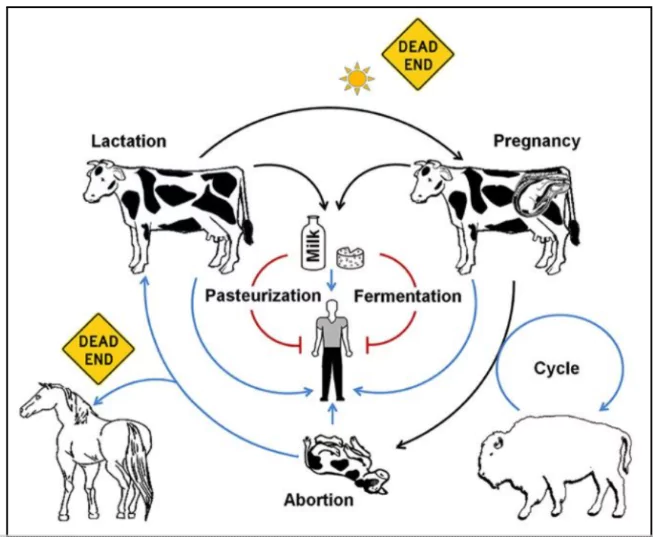Recently an eight-year-old girl from Kottakkal, Malappuram (Kerala), passed away at the Government Medical College Hospital, Kozhikode, after a two-month battle with brucellosis.
- The infection was linked to the consumption of unpasteurised milk.
- Kerala has reported sporadic cases in recent years.
About Brucellosis
- Brucellosis is a bacterial infection caused by Brucella species, primarily affecting cattle, goats, sheep, swine, and dogs.
- Zoonotic Disease: Brucellosis is one of the most widespread zoonoses transmitted by animals.
- Expansion of animal industries and urbanization, and the lack of hygienic measures in animal husbandry and in food handling, partly account for brucellosis remaining a public health hazard.
- Transmission: Humans contract the disease through:
- Direct contact with infected animals.
- Consuming contaminated animal products, particularly unpasteurised milk and cheese.
- Inhalation of airborne bacteria (less common).
- Human-to-human transmission is extremely rare, according to the World Health Organisation (WHO).
- Symptoms of Brucellosis : Fever, Weakness and fatigue, Weight loss and General discomfort or malaise.
- Incubation period: It ranges from one week to two months, with most cases showing symptoms within two to four weeks.
- Treatment: Brucellosis is treated with a combination of antibiotics, including Doxycycline and Streptomycin.
Check Out UPSC Modules From PW Store
Brucella (B. abortus) Life Cycle & Termination

- Host Infection and Persistence: Brucella infects the reticuloendothelial system, where it survives for extended periods.
- Reproductive and Mammary Invasion: During cattle pregnancy, it invades trophoblasts and mammary glands, leading to extensive replication.
- Transmission: Causes abortion, shedding through milk, placenta, and fetus, which become primary sources of infection.
- Environmental Survival: Survives for weeks in organic material but dies under direct sunlight.
- Prevention: Pasteurization or fermentation eliminates bacteria.
- Epidemiology: Wild animals maintain transmission; humans and horses are dead-end hosts.
Preventive Measures
- Vaccination of Livestock: Immunization of cattle, goats, and sheep can help control transmission.
- Pasteurisation of Milk: Ensuring milk and dairy products undergo pasteurisation before consumption prevents infection.
- Public Awareness Campaigns: Educating people about the risks of unpasteurised milk and promoting safe dairy practices.
- Regulatory Policies: Enforcing strict regulations on the sale and distribution of unpasteurised milk and dairy products.
Ready to boost your UPSC 2025 preparation? Join PW’s UPSC online courses today!
![]() 7 Feb 2025
7 Feb 2025


